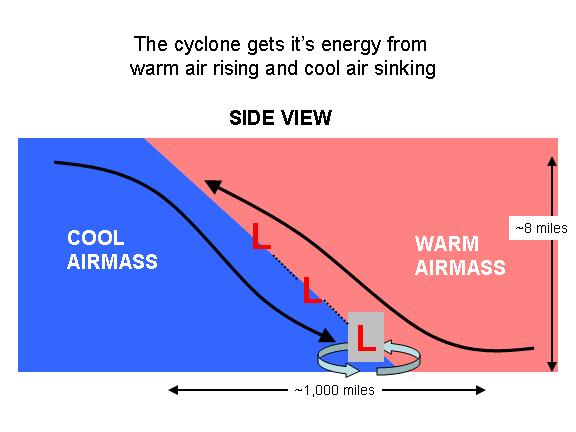what is cyclones
Cyclone : It is a tropical storm with winds blowing in large spiral around a relatively calm center known as 'eye'. It is formed over warm water. The eye can extend up to 50 Km and the hurricane may extend outward by hundreds of kilometer. Cyclones last from several hours to more than 2 weeks over open waters



